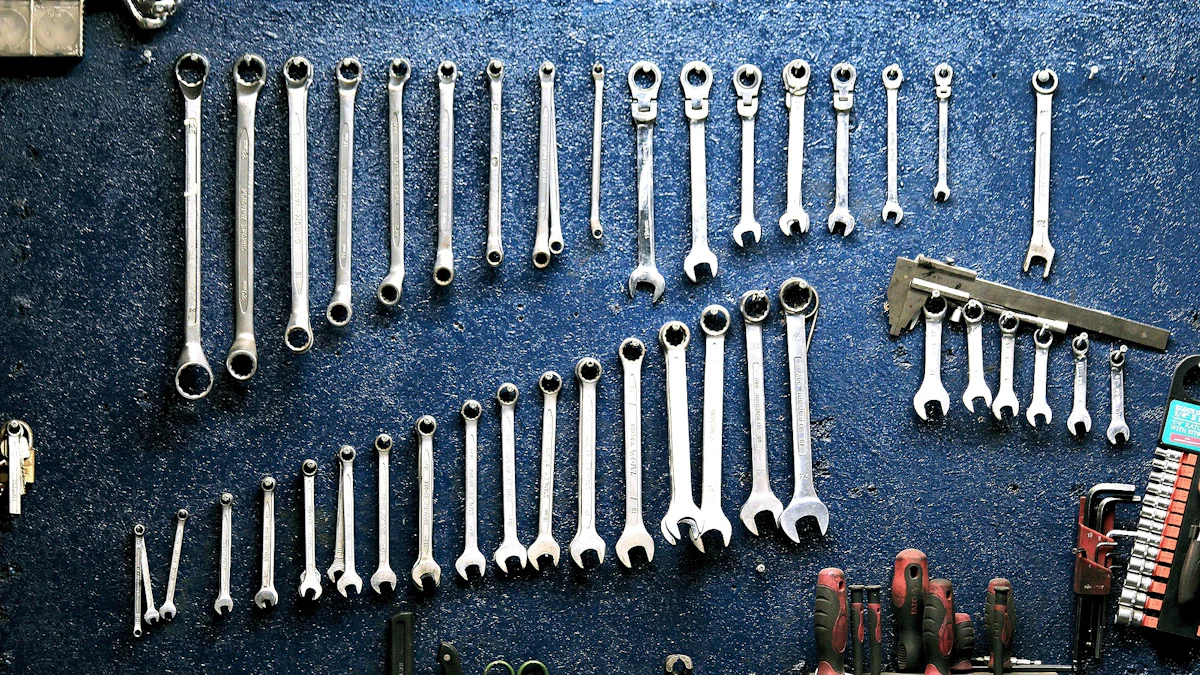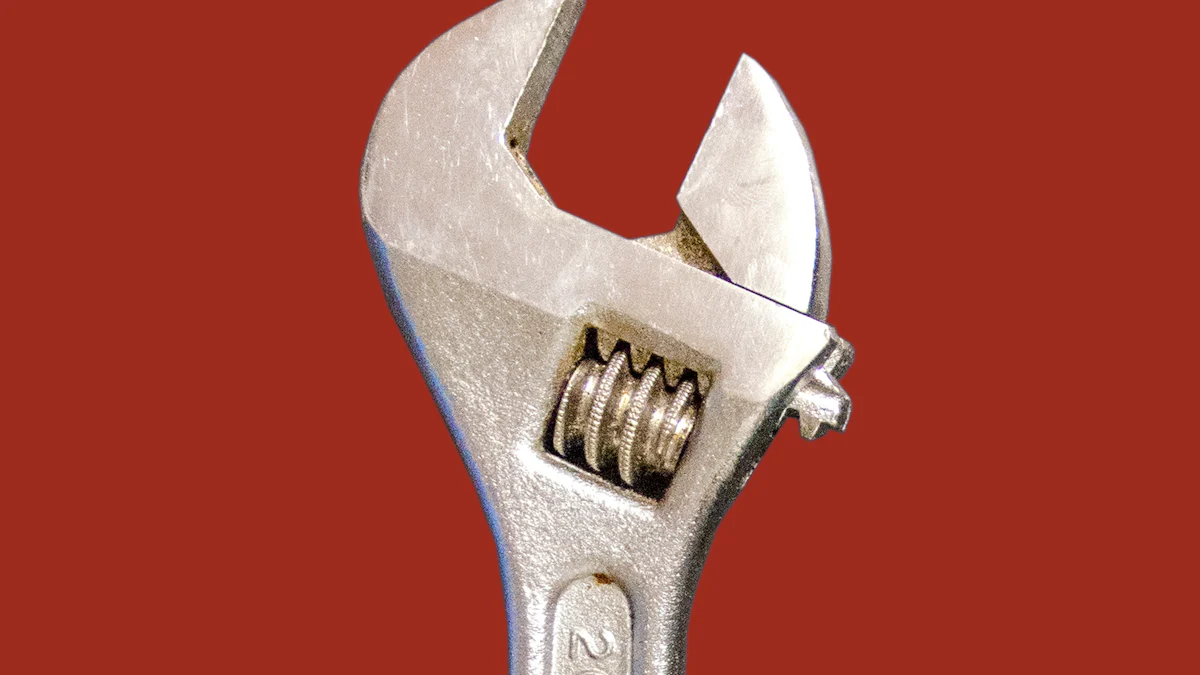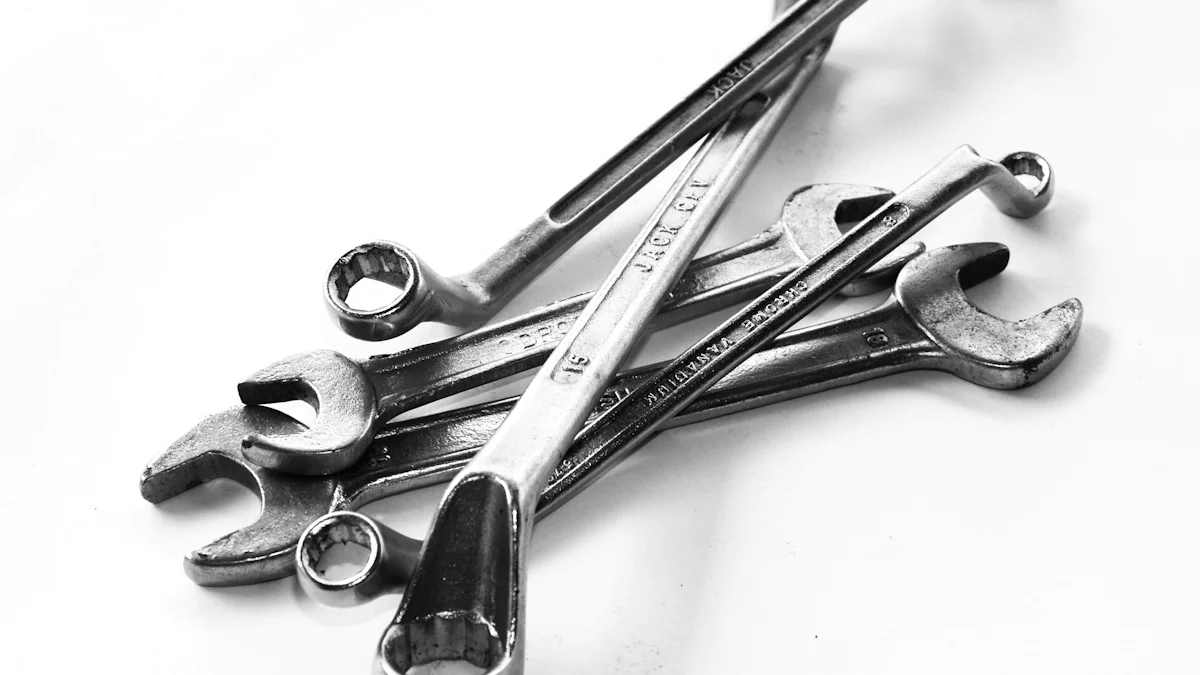
Choosing the right tube spanner holds great importance for any DIY enthusiast or professional mechanic. A proper tool ensures efficiency and safety during tasks. The market offers various options, but three types stand out. Each type caters to different needs and applications. Understanding these differences helps in making informed decisions.
Type 1: Adjustable Tube Spanner

Features of Adjustable Tube Spanner
Design and Build
The Adjustable Tube Spanner stands out with its unique design. This tool features a movable jaw that allows adjustments to fit various sizes of nuts and bolts. The spanner’s build often includes durable materials like steel, ensuring longevity. Users appreciate the ergonomic handle, which provides a comfortable grip during use. The design makes it an essential tool for those who need flexibility in their toolkit.
Adjustability Range
The adjustability range of this spanner is impressive. Users can modify the jaw width to accommodate different fasteners. This feature proves invaluable when dealing with various bolt sizes. The spanner’s versatility makes it suitable for multiple applications, from home repairs to professional tasks. Adjustability ensures that users do not need multiple tools for different jobs.
Advantages of Adjustable Tube Spanner
Versatility
Versatility defines the Adjustable Tube Spanner. This tool adapts to numerous tasks, making it a favorite among DIY enthusiasts and professionals alike. Users can rely on it for bicycle repairs, plumbing tasks, and general maintenance. The ability to adjust the jaw width means fewer tools are needed in the toolbox. This versatility saves both space and money.
Ease of Use
Ease of use is another advantage of this spanner. Users find it simple to adjust the jaw to the desired size. The ergonomic design reduces hand strain during prolonged use. This feature makes it accessible for individuals of all skill levels. The spanner’s straightforward operation encourages more efficient work practices.
Drawbacks of Adjustable Tube Spanner
Limited Torque
Limited torque presents a challenge for the Adjustable Tube Spanner. Users may find it difficult to apply high levels of force. This limitation can affect performance in heavy-duty applications. For tasks requiring significant torque, a fixed spanner might be more suitable. Users should consider this factor when selecting tools for specific jobs.
Wear and Tear
Wear and tear can occur with frequent use of this spanner. The adjustable mechanism may wear down over time. Regular maintenance can help prolong the tool’s lifespan. Users should inspect the spanner periodically to ensure optimal performance. Awareness of potential wear helps in planning for replacements or repairs.
Ideal Use Cases for Adjustable Tube Spanner
General Maintenance
The Adjustable Tube Spanner excels in general maintenance tasks. Home improvement projects often require tools that adapt to various needs. This spanner fits multiple bolt sizes, making it a reliable choice. Users find it useful for tasks like assembling furniture or fixing appliances. The tool’s versatility reduces the need for multiple spanners in a toolbox.
Plumbing Tasks
Plumbing tasks benefit greatly from the Adjustable Tube Spanner. Pipes and fittings come in different sizes, requiring a flexible tool. The spanner’s adjustable jaw provides the necessary adaptability. Users can tackle leaks and install fixtures with ease. The ergonomic handle ensures comfort during extended use. This tool proves invaluable for both novice and experienced plumbers.
Type 2: Fixed Tube Spanner
Features of Fixed Tube Spanner
Material and Durability
The Fixed Tube Spanner boasts robust material construction. Manufacturers often use high-grade steel to ensure durability. This material choice provides resistance against wear and tear. Users can rely on the spanner for long-term use without frequent replacements. The solid build makes it a dependable tool in any toolkit.
Size Variations
Size variations offer flexibility with the Fixed Tube Spanner. Users can select from a range of sizes to suit specific tasks. Each size caters to different bolt dimensions. This feature eliminates the need for adjustments. Users find the right fit for each application, enhancing efficiency. The variety ensures that every task has a suitable tube spanner.
Advantages of Fixed Tube Spanner
High Torque Capability
High torque capability stands out as a key advantage. The Fixed Tube Spanner delivers substantial force during use. Users can apply significant pressure without tool failure. This capability proves essential in heavy-duty applications. Tasks requiring high torque benefit greatly from this spanner. Users achieve desired results with minimal effort.
Durability
Durability remains a hallmark of the Fixed Tube Spanner. The sturdy construction withstands rigorous use. Users experience fewer issues related to wear. The spanner maintains performance over time. This reliability reduces the need for frequent replacements. Users enjoy a cost-effective tool that lasts.
Drawbacks of Fixed Tube Spanner
Lack of Flexibility
Lack of flexibility presents a notable drawback. The Fixed Tube Spanner does not adjust to different sizes. Users must have multiple spanners for various tasks. This limitation can lead to increased tool inventory. Users may find it inconvenient when dealing with diverse fasteners. The fixed nature restricts versatility.
Storage Space
Storage space poses another challenge. The Fixed Tube Spanner requires more room due to size variations. Users need ample storage to accommodate different spanners. This requirement can clutter toolboxes. Users must organize efficiently to manage space. The need for multiple sizes adds to storage concerns.
Ideal Use Cases for Fixed Tube Spanner
Heavy-Duty Applications
The Fixed Tube Spanner excels in heavy-duty applications. High torque capability makes this tool ideal for tasks requiring substantial force. Construction projects often demand tools that withstand rigorous use. The fixed spanner provides the necessary strength and reliability. Users can rely on the robust build for long-term performance. This tool proves invaluable in environments where durability is crucial.
Automotive Repairs
Automotive repairs benefit significantly from the Fixed Tube Spanner. Mechanics frequently encounter bolts and nuts of various sizes. The fixed spanner offers a secure grip, ensuring efficient work. Users appreciate the high torque capability during engine repairs. This tool handles stubborn fasteners with ease. The durable construction withstands the demands of automotive tasks. Mechanics find this spanner essential for maintaining vehicle performance.
Type 3: Ratcheting Tube Spanner

Features of Ratcheting Tube Spanner
Ratcheting Mechanism
The Ratcheting Tube Spanner features an innovative ratcheting mechanism. This mechanism allows continuous rotation without repositioning the tool. Users can tighten or loosen fasteners with minimal effort. The ratcheting action enhances speed and efficiency. This feature proves invaluable in tasks requiring repetitive motions.
Ergonomic Design
The ergonomic design of the Ratcheting Tube Spanner prioritizes user comfort. Manufacturers focus on creating a handle that reduces hand strain. Users experience less fatigue during prolonged use. The design ensures a secure grip, preventing slippage. This attention to ergonomics enhances overall user experience.
Advantages of Ratcheting Tube Spanner
Speed and Efficiency
Speed and efficiency define the Ratcheting Tube Spanner. The ratcheting mechanism allows quick fastening and loosening. Users complete tasks faster compared to traditional spanners. This efficiency proves beneficial in time-sensitive projects. The spanner’s design streamlines workflow, increasing productivity.
Reduced Hand Fatigue
Reduced hand fatigue stands out as a major advantage. The ergonomic handle minimizes stress on the user’s hands. Users can work longer without discomfort. This feature makes the spanner ideal for frequent use. The design caters to both professionals and DIY enthusiasts seeking comfort.
Drawbacks of Ratcheting Tube Spanner
Complexity
Complexity presents a challenge for the Ratcheting Tube Spanner. The intricate mechanism requires careful handling. Users may need time to familiarize themselves with the tool. Maintenance becomes crucial to ensure long-term functionality. Understanding the mechanism helps prevent operational issues.
Cost
Cost remains a consideration when choosing the Ratcheting Tube Spanner. The advanced design and features increase the price. Users must weigh the benefits against the investment. The spanner offers value through enhanced performance. Budget-conscious users should evaluate their specific needs.
Ideal Use Cases for Ratcheting Tube Spanner
Frequent Use Scenarios
The Ratcheting Tube Spanner excels in scenarios requiring frequent use. The ratcheting mechanism allows users to work swiftly and efficiently. Users can perform repetitive tasks without removing the tool from the fastener. This feature proves invaluable in assembly lines or workshops. The spanner’s design enhances productivity by reducing time spent on each task. Users find the tool indispensable for projects demanding speed and precision.
Tight Spaces
Tight spaces often pose challenges during repairs or installations. The Ratcheting Tube Spanner addresses these challenges effectively. The compact design allows access to confined areas where traditional spanners fail. Users can maneuver the tool with ease, even in cramped conditions. The ratcheting action eliminates the need for full rotations. This capability proves essential in automotive repairs and plumbing tasks. Users appreciate the spanner’s ability to handle fasteners in hard-to-reach places.
The comparison of tube spanner types highlights unique features and uses. The adjustable tube spanner offers versatility for various tasks. The fixed tube spanner provides high torque for heavy-duty applications. The ratcheting tube spanner excels in speed and efficiency. Choose a tube spanner based on specific needs. For general maintenance, the adjustable tube spanner works well. Heavy-duty tasks benefit from the fixed tube spanner. Frequent use scenarios require the ratcheting tube spanner. Understanding these differences helps in selecting the right tube spanner. Make informed decisions to enhance tool efficiency and performance.
